
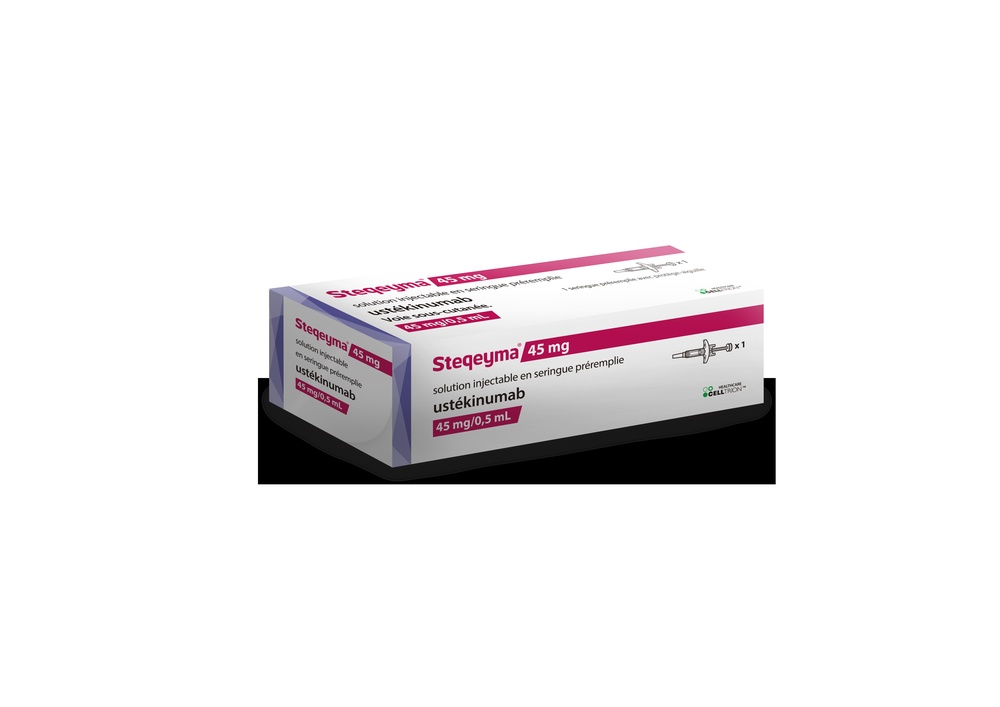
СТЕКЕЙМА 45 мг Раствор для инъекций в предварительно заполненном шприце


Инструкция по применению СТЕКЕЙМА 45 мг Раствор для инъекций в предварительно заполненном шприце
Введение
Инструкция: информация для пациента
Этот препарат подлежит дополнительному наблюдению, что облегчит обнаружение новой информации о его безопасности. Вы можете внести свой вклад, сообщая о нежелательных реакциях, которые у вас могут возникнуть. В конце раздела 4 содержится информация о том, как сообщать о этих нежелательных реакциях.
Прочитайте весь листок внимательно перед началом использования этого препарата, поскольку он содержит важную информацию для вас.
Этот листок составлен для человека, который принимает препарат. Если вы являетесь родителем или опекуном ребенка, которому будет назначен Steqeyma, пожалуйста, прочитайте эту информацию внимательно.
- Сохраните этот листок, поскольку вам может потребоваться прочитать его снова.
- Если у вас есть какие-либо вопросы, проконсультируйтесь с вашим врачом или фармацевтом.
- Этот препарат назначен только вам, и не следует давать его другим людям, даже если у них такие же симптомы, как у вас, поскольку он может нанести им вред.
- Если вы испытываете нежелательные реакции, проконсультируйтесь с вашим врачом или фармацевтом, даже если это нежелательные реакции, которые не указаны в этом листке. См. раздел 4.
Содержание листка
- Что такое Steqeyma и для чего он используется
- Что нужно знать перед началом использования Steqeyma
- Как использовать Steqeyma
- Возможные нежелательные реакции
- Хранение Steqeyma
- Содержание упаковки и дополнительная информация
1. Что такое Steqeyma и для чего он используется
Что такое Steqeyma
Steqeyma содержит активное вещество "устекинумаб", моноклональное антитело. Моноклональные антитела - это белки, которые специфически распознают и связываются с определенными белками организма.
Steqeyma относится к группе препаратов, называемых "иммунодепрессантами". Эти препараты действуют путем ослабления части иммунной системы.
Для чего используется Steqeyma
Steqeyma используется для лечения следующих воспалительных заболеваний:
- Псориаз в виде бляшек - у взрослых и детей от 6 лет и старше
- Псориатический артрит - у взрослых
- Болезнь Крона средней и тяжелой степени - у взрослых
Псориаз в виде бляшек
Псориаз в виде бляшек - это заболевание кожи, которое вызывает воспаление, поражающее кожу и ногти. Steqeyma снижает воспаление и другие признаки заболевания.
Steqeyma используется у взрослых с псориазом в виде бляшек средней и тяжелой степени, которые не могут использовать циклоспорин, метотрексат или фототерапию, или когда эти методы лечения не эффективны.
Steqeyma используется у детей и подростков от 6 лет и старше с псориазом в виде бляшек средней и тяжелой степени, которые не могут переносить фототерапию или другие системные методы лечения, или когда эти методы лечения не эффективны.
Псориатический артрит
Псориатический артрит - это воспалительное заболевание суставов, которое обычно сопровождается псориазом. Если у вас активный псориатический артрит, сначала вам будут назначены другие препараты. Если вы не хорошо реагируете на эти препараты, вам может быть назначен Steqeyma для:
- Снижения признаков и симптомов вашего заболевания.
- Улучшения вашей физической функции.
- Снижения повреждения суставов.
Болезнь Крона
Болезнь Крона - это воспалительное заболевание кишечника. Если у вас болезнь Крона, сначала вам будут назначены другие препараты. Если вы не хорошо реагируете на эти препараты или не можете их переносить, вам может быть назначен Steqeyma для снижения признаков и симптомов вашего заболевания.
2. Что нужно знать перед началом использования Steqeyma
Не используйте Steqeyma
- Если вы аллергичны к устекинумабуили любому другому компоненту этого препарата (перечисленному в разделе 6).
- Если у вас есть активная инфекция, которую ваш врач считает важной.
Если вы не уверены, что какой-либо из этих пунктов относится к вам, проконсультируйтесь с вашим врачом или фармацевтом перед использованием Steqeyma.
Предостережения и меры предосторожности
Проконсультируйтесь с вашим врачом или фармацевтом перед началом использования Steqeyma. Ваш врач проверит ваше состояние перед каждым лечением. Убедитесь, что вы сообщите вашему врачу о любом заболевании, которое у вас есть, перед каждым лечением. Ваш врач также спросит, были ли вы недавно рядом с кем-то, кто мог иметь туберкулез. Ваш врач осмотрит вас и проведет тест на обнаружение туберкулеза перед использованием Steqeyma. Если ваш врач считает, что вы находитесь в группе риска туберкулеза, он может назначить вам препараты для лечения туберкулеза.
Обратите внимание на тяжелые нежелательные реакции
Steqeyma может вызывать тяжелые нежелательные реакции, включая аллергические реакции и инфекции. Вы должны обратить внимание на определенные признаки заболевания, пока используете Steqeyma. См. полный список этих нежелательных реакций в разделе "Тяжелые нежелательные реакции" раздела 4.
Прежде чем использовать Steqeyma, сообщите вашему врачу:
- Если вы когда-либо имели аллергическую реакцию на устекинумаб.Проконсультируйтесь с вашим врачом, если вы не уверены.
- Если вы когда-либо имели какой-либо вид рака- это потому, что иммунодепрессанты типа Steqeyma ослабляют часть иммунной системы. Это может увеличить риск развития рака.
- Если вы получали лечение псориаза другими биологическими препаратами (препарат, произведенный из биологического источника и обычно вводимый путем инъекции)- риск развития рака может быть выше.
- Если у вас была недавно инфекция.
- Если у вас есть новая травма или изменение травмв области псориаза или на здоровой коже.
Если вы принимаете любое другое лечение псориаза и/или псориатического артрита- такое как любое другое иммунодепрессивное лечение или фототерапия (когда ваш организм подвергается воздействию определенного типа ультрафиолетового света (УФ)). Эти методы лечения также могут ослаблять часть иммунной системы. Не было проведено изучение использования этих методов лечения в сочетании с устекинумабом. Однако возможно, что это может увеличить вероятность развития заболеваний, связанных с ослабленной иммунной системой.
- Если вы получаете или получали когда-либо инъекции для лечения аллергии- неизвестно, может ли устекинумаб влиять на эти методы лечения.
- Если вам 65 лет или более- вы имеете больше шансов приобрести инфекции.
Если вы не уверены, что какой-либо из этих пунктов относится к вам, проконсультируйтесь с вашим врачом или фармацевтом перед использованием Steqeyma.
Некоторые пациенты испытывали реакции, подобные системной красной волчанке, во время лечения устекинумабом, включая кожную красную волчанку или синдром, подобный системной красной волчанке. Проконсультируйтесь с вашим врачом немедленно, если вы испытываете красную кожную сыпь, повышенную и чешуйчатую, иногда с более темной окантовкой, в областях кожи, подверженных воздействию солнца, или если они сопровождаются болями в суставах.
Сердечные приступы и инсульты
В одном из исследований, проведенных на пациентах с псориазом, леченных устекинумабом, были обнаружены сердечные приступы и инсульты. Ваш врач будет регулярно проверять ваши факторы риска сердечно-сосудистых заболеваний и инсульта, чтобы обеспечить их адекватное лечение. Обратитесь за медицинской помощью немедленно, если у вас есть боль в груди, слабость или необычное ощущение в одной стороне тела, паралич лица или аномалии в речи или зрении.
Дети и подростки
Не рекомендуется использовать Steqeyma у детей младше 6 лет с псориазом в виде бляшек и у детей младше 18 лет с псориатическим артритом или болезнью Крона, поскольку это не было изучено в этой возрастной группе.
Другие препараты, вакцины и Steqeyma
Сообщите вашему врачу или фармацевту:
- Если вы принимаете, недавно принимали или можете принять другие препараты.
- Если вы были недавно вакцинированы или собираетесь получить вакцину. Не следует вводить определенные типы вакцин (живые вакцины) во время использования Steqeyma.
- Если вы получали Steqeyma во время беременности, сообщите врачу вашего ребенка о вашем лечении устекинумабом перед тем, как ваш ребенок получит любую вакцину, включая живые вакцины, такие как вакцина БЦЖ (используемая для предотвращения туберкулеза). Не рекомендуется использовать живые вакцины для вашего ребенка в течение первых шести месяцев после рождения, если вы получали Steqeyma во время беременности, unless врач вашего ребенка рекомендует иное.
Беременность и лактация
- Предпочтительно избегать использования Steqeyma во время беременности. Неизвестны эффекты устекинумаба на беременных женщин. Если вы женщина детородного возраста, вам рекомендуется избегать беременности и использовать адекватные методы контрацепции во время использования Steqeyma и в течение как минимум 15 недель после последнего лечения устекинумабом.
- Сообщите вашему врачу, если вы беременны, считаете, что могли стать беременной или планируете стать беременной.
- Устекинумаб может проникать через плаценту к плоду. Если вы получали Steqeyma во время беременности, ваш ребенок может иметь повышенный риск заразиться инфекцией.
- Важно сообщить врачам вашего ребенка и другим медицинским работникам, если вы получали Steqeyma во время беременности, прежде чем ваш ребенок получит любую вакцину. Не рекомендуется использовать живые вакцины, такие как вакцина БЦЖ (используемая для предотвращения туберкулеза), для вашего ребенка в течение первых шести месяцев после рождения, если вы получали Steqeyma во время беременности, unless врач вашего ребенка рекомендует иное.
- Устекинумаб может выделяться в грудное молоко в очень небольших количествах. Сообщите вашему врачу, если вы кормите грудью или планируете это делать. Вы и ваш врач решите, следует ли вам кормить грудью или использовать Steqeyma. Не делайте этого одновременно.
Вождение и использование машин
Влияние Steqeyma на способность управлять транспортными средствами и работать с машинами является незначительным или отсутствует.
3. Как использовать Steqeyma
Steqeyma должен использоваться под руководством и наблюдением врача с опытом лечения заболеваний, для которых показан Steqeyma.
Всегда следуйте точно инструкциям по введению этого препарата, указанным вашим врачом. В случае сомнений проконсультируйтесь с вашим врачом. Спросите вашего врача, когда вам следует вводить инъекции и о последующих посещениях.
Какая доза Steqeyma вводится
Ваш врач решит, какая доза Steqeyma вам нужна, и как долго будет длиться лечение.
Взрослые от 18 лет и старше Псориаз или псориатический артрит
- Рекомендуемая начальная доза составляет 45 мг Steqeyma. Пациенты, вес которых превышает 100 килограммов (кг), могут начать с дозы 90 мг вместо 45 мг.
- После начальной дозы вы примете следующую дозу через 4 недели, а затем каждые 12 недель. Последующие дозы обычно такие же, как начальная доза.
Болезнь Крона
- Во время лечения ваш врач введет первую дозу примерно 6 мг/кг Steqeyma путем внутривенного введения в вену руки (инфузии). После начальной дозы вы примете следующую дозу 90 мг Steqeyma через 8 недель, а затем каждые 12 недель, путем подкожной инъекции ("подкожно").
- У некоторых пациентов после первой подкожной инъекции вводятся 90 мг Steqeyma каждые 8 недель. Ваш врач решит, когда вам следует получить следующую дозу.
Дети и подростки от 6 лет и старше Псориаз
Не существует фармацевтической формы Steqeyma для детей с псориазом в виде бляшек с весом тела менее 60 кг, поэтому должны использоваться другие препараты с устекинумабом.
- Ваш врач укажет правильную дозу для вас, включая количество (объем) Steqeyma, которое необходимо ввести для получения правильной дозы. Правильная доза для вас будет зависеть от вашего веса тела в момент введения каждой дозы.
- Если ваш вес менее 60 кг, не существует фармацевтической формы Steqeyma, и должны использоваться другие препараты с устекинумабом.
- Если ваш вес составляет от 60 кг до 100 кг, рекомендуемая доза составляет 45 мг Steqeyma.
- Если ваш вес превышает 100 кг, рекомендуемая доза составляет 90 мг Steqeyma.
- После начальной дозы вы примете следующую дозу через 4 недели, а затем каждые 12 недель.
Как вводится Steqeyma
- Steqeyma вводится путем подкожной инъекции ("подкожно"). В начале вашего лечения медицинский персонал или медсестра могут вводить вам Steqeyma.
- Однако вы и ваш врач можете решить, что вы будете вводить Steqeyma самостоятельно. В этом случае вас будут обучать, как вводить Steqeyma самостоятельно.
- Для инструкций по введению Steqeyma см. "Инструкции по введению" в конце этого листка.
Проконсультируйтесь с вашим врачом, если у вас есть какие-либо вопросы о том, как вводить Steqeyma самостоятельно.
Если вы использовали больше Steqeyma, чем следует
Если вы использовали или вам было введено слишком много Steqeyma, немедленно проконсультируйтесь с вашим врачом или фармацевтом. Всегда носите с собой упаковку препарата, даже если она пуста.
Если вы пропустили использование Steqeyma
Если вы пропустили дозу, проконсультируйтесь с вашим врачом или фармацевтом. Не принимайте двойную дозу, чтобы компенсировать пропущенные дозы.
Если вы прекратили лечение Steqeyma
Прекращение использования Steqeyma не является опасным. Однако, если вы прекратите его использование, ваши симптомы могут вернуться.
Если у вас есть какие-либо другие вопросы о использовании этого препарата, проконсультируйтесь с вашим врачом или фармацевтом.
4. Возможные нежелательные реакции
Как и все препараты, этот препарат может вызывать нежелательные реакции, хотя не все люди испытывают их.
Тяжелые нежелательные реакции
Некоторые пациенты могут испытывать тяжелые нежелательные реакции, которые могут потребовать срочного лечения.
Аллергические реакции - они могут потребовать срочного лечения. Обратитесь к вашему врачу или получите срочную медицинскую помощь немедленно, если вы заметите какие-либо из следующих признаков.
- Тяжелые аллергические реакции ("анафилаксия") редки у населения, использующего устекинумаб (могут поражать до 1 из 1000 человек). Признаки включают:
- затруднение дыхания и глотания
- низкое кровяное давление, которое может вызвать головокружение или легкие головные боли
- отек лица, губ, рта или горла.
- Общие признаки аллергической реакции включают кожную сыпь и крапивницу (это может поражать до 1 из 100 человек).
В редких случаях были зарегистрированы аллергические реакции в легких и воспаление легких у пациентов, леченных устекинумабом. Сообщите вашему врачу немедленно, если у вас есть симптомы, такие как кашель, затруднение дыхания и лихорадка.
Если у вас есть тяжелая аллергическая реакция, ваш врач может решить, что вы не должны использовать Steqeyma снова.
Инфекции - они могут потребовать срочного лечения. Обратитесь к вашему врачу немедленно, если вы заметите какие-либо из этих признаков.
- Инфекции носа или горла и простуда являются частыми (могут поражать до 1 из 10 человек).
- Инфекции легких являются нечастыми (могут поражать до 1 из 100 человек).
- Воспаление тканей под кожей ("целлюлит") является нечастым (может поражать до 1 из 100 человек).
- Герпес (тип болезненной сыпи с пузырьками) является нечастым (может поражать до 1 из 100 человек).
Steqeyma может влиять на вашу способность бороться с инфекциями. Некоторые из них могут быть тяжелыми и вызваны вирусами, грибами, бактериями (включая туберкулез) или паразитами, и включают инфекции, которые в основном поражают людей с ослабленной иммунной системой (оппортунистические инфекции). Были зарегистрированы оппортунистические инфекции мозга (энцефалит, менингит), легких и глаз у пациентов, получающих лечение устекинумабом.
Вы должны следить за признаками инфекции, пока используете Steqeyma. Это включает:
- лихорадку, симптомы гриппа, ночные поты, потерю веса
- чувство усталости или затруднение дыхания; кашель, который не проходит
- кожу, горячую, красную и болезненную, или наличие болезненной сыпи с пузырьками
- зуд при мочеиспускании
- диарею
- ухудшение зрения или потерю зрения
- головную боль, напряжение шеи, чувствительность к свету, тошноту или путаницу.
Свяжитесь с вашим врачом немедленно, если вы заметите какие-либо из этих признаков инфекции, поскольку они могут быть признаками инфекций, таких как инфекции легких, кожные инфекции, герпес или оппортунистические инфекции, которые могут иметь тяжелые осложнения. Также сообщите вашему врачу, если у вас есть любая инфекция, которая не проходит или возвращается. Ваш врач может решить, что вы не должны использовать Steqeyma, пока инфекция не пройдет. Также свяжитесь с вашим врачом, если у вас есть открытая рана или язва, которая может стать инфицированной.
Отделение кожи – увеличение покраснения и отторжение кожи на большой поверхности тела могут быть симптомами эритродермической псориазы или эксфолиативного дерматита, которые являются серьезными кожными заболеваниями. Если вы заметите любой из этих симптомов, немедленно сообщите об этом вашему врачу.
Другие нежелательные эффекты
Частые нежелательные эффекты(могут возникать у до 1 из 10 человек):
- Диарея
- Тошнота
- Рвота
- Чувство усталости
- Чувство головокружения
- Головная боль
- Зуд ("прурит")
- Боль в спине, мышцах или суставах
- Боль в горле
- Покраснение и боль в месте инъекции
- Синусит
Редкие нежелательные эффекты(могут возникать у до 1 из 100 человек):
- Дентальные инфекции
- Вагинальные инфекции, вызванные дрожжами
- Депрессия
- Закупорка или конгестия носа
- Кровотечение, синяки, уплотнение, отек и зуд в месте инъекции
- Чувство слабости
- Птоз и впалость мышц на одной стороне лица ("фациальный паралич" или "Беллский паралич"), который обычно временный
- Изменение псориаза с покраснением и новой пузырчатой сыпью на коже, иногда сопровождающейся лихорадкой (пустулезная псориаз)
- Отслоение кожи (эксфолиация кожи)
- Акне
Редкие нежелательные эффекты(могут возникать у до 1 из 1000 человек):
- Покраснение и отторжение кожи на большой поверхности тела, которые могут вызывать зуд или боль (эксфолиативный дерматит). Могут развиваться подобные симптомы, как естественное изменение симптомов псориаза (эритродермическая псориаз)
- Воспаление мелких кровеносных сосудов, которое может вызывать кожную сыпь с мелкими красными или фиолетовыми бугорками, лихорадку или суставную боль (васкулит)
Очень редкие нежелательные эффекты(могут возникать у до 1 из 10 000 человек)
- Пузырьки на коже, которые могут быть красными и вызывать зуд и боль (пузырчатый пемфигус).
- Кожный lupus или lupus-подобный синдром (красная, возвышенная и чешуйчатая кожная сыпь на участках кожи, подверженных воздействию солнца, возможно, сопровождающаяся суставными болями).
Сообщение о нежелательных эффектах
Если вы испытываете любой нежелательный эффект, проконсультируйтесь с вашим врачом или фармацевтом, даже если это возможные нежелательные эффекты, которые не указаны в этом листке инструкции. Вы также можете сообщить об этом напрямую через национальную систему уведомления, включенную в Приложение V. Сообщая о нежелательных эффектах, вы можете способствовать предоставлению более полной информации о безопасности этого лекарства.
5. Хранение Steqeyma
- Храните это лекарство вне поля зрения и досягаемости детей.
- Храните в холодильнике (при температуре между 2 °C и 8 °C). Не замораживайте.
- Храните предварительно заполненную шприц-инъектор в наружной упаковке, чтобы защитить его от света.
- Если необходимо, отдельные предварительно заполненные шприц-инъекторы Steqeyma также могут храниться при комнатной температуре до 30 °C в течение одного периода времени до 31 дня в оригинальной упаковке, чтобы защитить их от света. Запишите дату, когда предварительно заполненный шприц-инъектор был впервые удален из холодильника, и дату, когда он должен быть утилизирован, в предусмотренном месте на наружной упаковке. Дата утилизации не должна превышать исходную дату истечения срока годности, напечатанную на упаковке. Как только шприц-инъектор был хранен при комнатной температуре (до 30 °C), его нельзя хранить снова в холодильнике. Утилизируйте шприц-инъектор, если он не используется в течение 31 дня хранения при комнатной температуре или до даты истечения срока годности, в зависимости от того, что наступит раньше.
- Не встряхивайте предварительно заполненные шприц-инъекторы Steqeyma. Продолжительное энергичное встряхивание может повредить продукт.
Не используйте это лекарство:
- После даты истечения срока годности, указанной на этикетке и упаковке после "CAD". Дата истечения срока годности - последний день месяца, указанного.
- Если жидкость изменила цвет, стала мутной или содержит посторонние частицы, плавающие в ней (см. раздел 6 "Вид Steqeyma и содержимое упаковки").
- Если вы знаете или полагаете, что были подвергнуты воздействию экстремальных температур (например, случайного нагрева или замораживания).
- Если продукт был энергично встряхнут.
Steqeyma предназначен для одноразового использования. Вы должны выбросить непользованный продукт, оставшийся в шприце-инъекторе. Лекарства не должны выбрасываться в канализацию или мусор. Спросите вашего фармацевта, как утилизировать упаковку и лекарства, которые вам больше не нужны. Таким образом, вы поможете защитить окружающую среду.
6. Содержимое упаковки и дополнительная информация
Состав Steqeyma
- Активное вещество - устекинумаб. Каждый предварительно заполненный шприц-инъектор содержит 45 мг устекинумаба в 0,5 мл.
- Другие компоненты - L-гистидин, моногидрат моногидрохлорида L-гистидина, полисорбат 80, сахароза и вода для инъекций.
Вид Steqeyma и содержимое упаковки
Steqeyma - прозрачная или слегка опалесцирующая (с перламутровым блеском) инъекционная раствор, бесцветный или светло-желтый. Раствор может содержать несколько прозрачных или белых белковых частиц. Он представлен в упаковке, содержащей 1 предварительно заполненный шприц-инъектор из стекла объемом 1 мл. Каждый предварительно заполненный шприц-инъектор содержит 45 мг устекинумаба в 0,5 мл инъекционного раствора.
Владелец разрешения на маркетинг
Celltrion Healthcare Hungary Kft. 1062 Будапешт
Ваци ут 1-3. WestEnd Office Building B торни Хунгрия
Производитель
Nuvisan France SARL 2400, Route des Colles 06410, Бьо
Франция
MIDAS Pharma GmbH Рейнштрассе 49
55218 Вест Ингельхайм ам Рейн Рейнланд-Пфальц
Германия
Kymos S.L.
Ронда де Кан Фатжо 7Б Парк Текнолохик дел Вальес
08290 Серданьола дель Вальес Барселона
Испания
Вы можете запросить дополнительную информацию о этом лекарстве, обратившись к местному представителю владельца разрешения на маркетинг:
Испания
Kern Pharma, S.L.
Телефон: +34 93 700 2525
Инструкции по применению
В начале лечения ваш медицинский работник поможет вам с первой инъекцией. Однако вы и ваш врач можете решить, что вы можете вводить Steqeyma самостоятельно. Если это произойдет, вы получите обучение по введению Steqeyma. Поговорите с вашим врачом, если у вас есть какие-либо вопросы о том, как вводить Steqeyma самостоятельно.
Важная информация
- Неоткрывайте картонную упаковку до тех пор, пока не будете готовы использовать предварительно заполненный шприц-инъектор.
- Неудаляйте колпачок до тех пор, пока не будете готовы сделать инъекцию.
- Несмешивайте Steqeyma с другими инъекционными жидкостями.
- Предварительно заполненный шприц-инъектор не может быть повторно использован. Утилизируйте использованный предварительно заполненный шприц-инъектор сразу после использования в контейнере для острых предметов (см. пункт 14. Утилизация Steqeyma).
Хранение Steqeyma
- Храните предварительно заполненный шприц вне поля зрения и досягаемости детей.Он содержит мелкие детали.
- Храните предварительно заполненный шприц в холодильнике при температуре от 2 °C до 8 °C. Незамораживайте.
- Храните это лекарство в закрытой упаковке, чтобы защитить его от света.
- Если необходимо, отдельные предварительно заполненные шприцы Steqeyma также можно хранить при комнатной температуре до 30 °C в течение одного периода времени до 31 дня в оригинальной упаковке, чтобы защитить их от света.
- Нетрясите предварительно заполненные шприцы Steqeyma. Сильные удары могут повредить лекарство.
- Неиспользуйте лекарство, если оно было сильно встряхнуто.
- Неиспользуйте предварительно заполненный шприц, если он упал.
Части предварительно заполненного шприца (см. рисунок А)
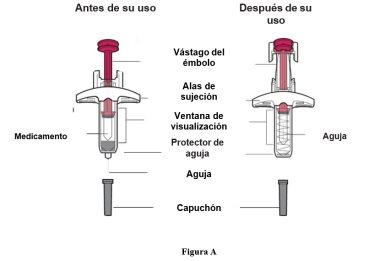
Подготовка к инъекции
|
Не включено в коробку:
| |
Коробка, содержащая вату или марлю и предварительно заполненный шприц с ватной прослойкой и алкоголем | ||
| ||
Пластырь Контейнер для острых предметов | ||
Рисунок Б |
| |
Рисунок В |
| |
30
Рисунок Г |
|
Рисунок Д |
| |
|
| |
Рисунок Е | ||
= Самоинъекция и помощник Рисунок Ж |
|
Рисунок З |
| |
|
| |
Рисунок И |
Введение инъекции
Рисунок КНеиспользуйте шприц, если он упал без колпачка на игле. Если это произошло, обратитесь к врачу или фармацевту. Вводите дозу сразу после удаления колпачка с иглы.
|
Рисунок Л |
Рисунок М |
Рисунок Н |
После инъекции
|
Рисунок ОЛекарства недолжны выбрасываться в канализацию или мусор. Спросите у вашего фармацевта, как утилизировать лекарства, которые вам больше не нужны. Таким образом, вы поможете защитить окружающую среду. |
- Страна регистрации
- Активное вещество
- Требуется рецептДа
- Производитель
- Информация носит справочный характер и не является медицинской рекомендацией. Перед приемом любых препаратов проконсультируйтесь с врачом. Oladoctor не несет ответственности за медицинские решения, принятые на основе этого контента.
- Аналоги СТЕКЕЙМА 45 мг Раствор для инъекций в предварительно заполненном шприцеФорма выпуска: ИНЪЕКЦИОННЫЙ РАСТВОР ДЛЯ ИНФУЗИЙ, 130 мгАктивное вещество: УстекинумабПроизводитель: Accord Healthcare S.L.U.Требуется рецептФорма выпуска: ИНЪЕКЦИОННЫЙ РАСТВОР, 45 мгАктивное вещество: УстекинумабПроизводитель: Accord Healthcare S.L.U.Требуется рецептФорма выпуска: ИНЪЕКЦИОННЫЙ РАСТВОР, 90 мгАктивное вещество: УстекинумабПроизводитель: Accord Healthcare S.L.U.Требуется рецепт
Врачи онлайн по СТЕКЕЙМА 45 мг Раствор для инъекций в предварительно заполненном шприце
Консультация по дозировке, побочным эффектам, взаимодействиям, противопоказаниям и продлению рецепта на СТЕКЕЙМА 45 мг Раствор для инъекций в предварительно заполненном шприце – по решению врача и с учетом местных правил.




 ВАТНАЯ ПРОСЛОЙКА С АЛКОГОЛЕМ
ВАТНАЯ ПРОСЛОЙКА С АЛКОГОЛЕМ

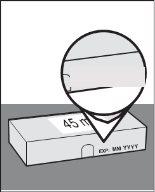 СРОК ГОДНОСТИ:ММ/ГГГГ
СРОК ГОДНОСТИ:ММ/ГГГГ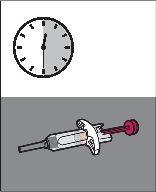 минут
минут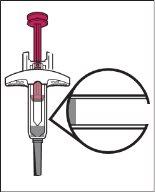 СРОК ГОДНОСТИ:ММ/ГГГГ
СРОК ГОДНОСТИ:ММ/ГГГГ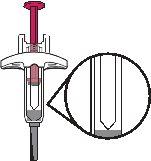
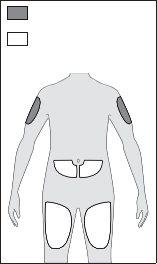 = ТОЛЬКО для помощника
= ТОЛЬКО для помощника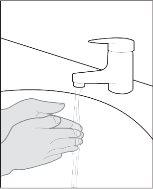

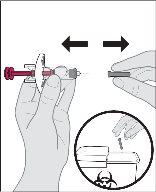 Удалите колпачок.
Удалите колпачок.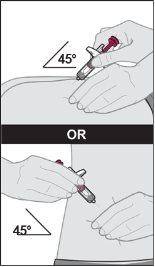 ИЛИглубоко (в мышцу).
ИЛИглубоко (в мышцу).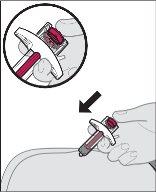 Введение инъекции.
Введение инъекции.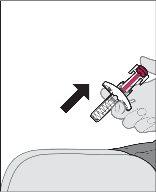 Удалите шприц из места инъекции.
Удалите шприц из места инъекции.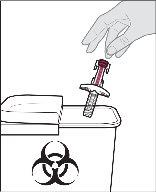 Утилизация Steqeyma.
Утилизация Steqeyma.

